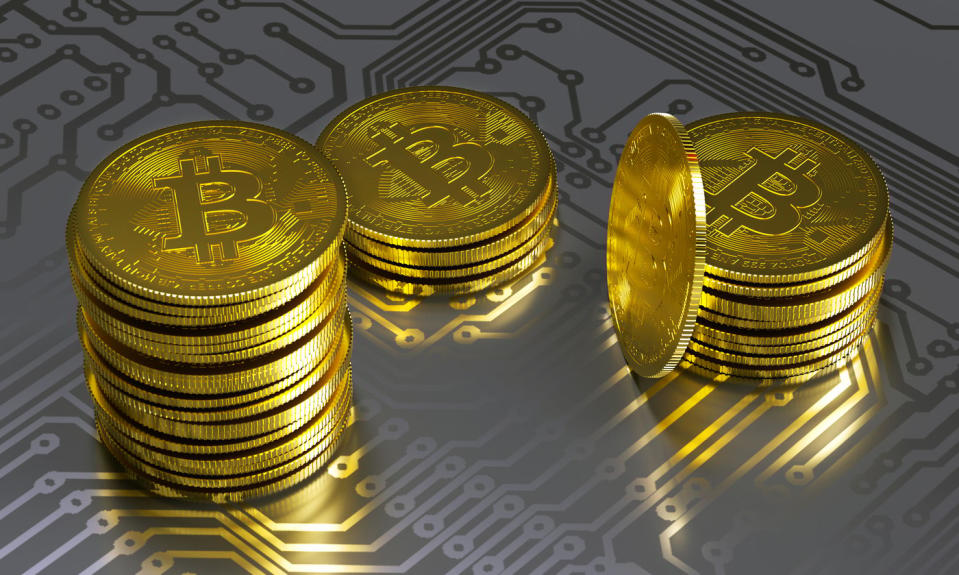Bitcoin (CRYPTO: BTC) has minted a lot of millionaires. The world’s leading cryptocurrency soared 12,590% over the past decade — and that blistering rally would have turned a modest $10,000 investment into $1.27 million. That same investment in an S&P 500 index fund would only be worth about $28,000 today.
Bitcoin crushed the market because it grew from a niche token into a mainstream asset which was bundled into its own spot price exchange-traded funds (ETFs). It was even adopted as a national currency in El Salvador and the Central African Republic, and other inflation-wracked countries might follow that example over the next few years. So could Bitcoin generate even more millionaire-making gains over the next decade? Let’s review its long-term catalysts and challenges to find out.

Why did Bitcoin’s price keep rising?
Bitcoin is mined with an energy-intensive “proof of work” (PoW) method which requires powerful ASIC (application specific integrated circuit) miners. That process becomes more difficult every four years with a “halving,” which cuts the rewards for mining in half. Bitcoin’s supply is also finite, and its last token is expected to be mined by 2140.
Those qualities make Bitcoin more similar to a precious metal like gold or silver than other tokens which are “minted” (by creating new blocks on a blockchain) or paid out as rewards through the less energy-intensive “proof of stake” (PoS) method.
That firmer foundation supported the U.S. Securities and Exchange Commission’s (SEC) decision to classify Bitcoin as the only cryptocurrency that could be recognized as a commodity instead of a security. That key difference also supported the SEC’s decision to approve the market’s first spot price Bitcoin ETFs before it greenlit the first ones for Ethereum (CRYPTO: ETH), which pivoted from the PoW method to the PoS method two years ago.
Bitcoin’s price has gone through some wild swings over the past four years. In 2020, it soared 322% as stimulus checks, social media buzz, and the growing popularity of crypto trading platforms brought in new investors. Bitcoin’s third halving in May 2020 also further tightened up its supply. In 2021, Bitcoin’s price soared another 47% as the buying frenzy continued.
But in 2022, Bitcoin’s price plunged 48% as soaring interest rates drove investors toward more conservative investments. That “crypto winter” chilled the notion that Bitcoin was a safe-haven asset or a reliable hedge against inflation. In 2023, Bitcoin’s price rose 31% as interest rates stabilized. That rally continued in 2024 with a year-to-date gain of 44% — which was driven by its spot price ETF approvals in January, its fourth halving in April, and expectations for interest rate cuts.
Could Bitcoin generate more millionaire-making gains?
That recovery is impressive, but Bitcoin’s long-term price targets are still all over the map. Social Capital’s Chamath Palihapitiya sees it hitting $500,000 by late 2025, Fidelity’s Jurrien Timmer expects it to reach $1 million by 2028-2030, and Ark Invest’s Cathie Wood claims it could soar to a whopping $3.8 million by 2030.
We should take those bullish estimates with a grain of salt, but they’re all based on long-term expectations for lower interest rates, more institutional purchases of Bitcoin, and the growing adoption of Bitcoin as a reserve asset. The bulls also expect the next halving in 2028 to further tighten up its supply against that rising demand.
But Bitcoin already has a market cap of $1.2 trillion, compared to silver’s market cap of $1.7 trillion and gold’s market cap of $17.5 trillion. If Bitcoin’s price rises from $60,000 to $500,000, its market cap would hit $10 trillion. If it hits $1 million, it would reach a market cap of $20 trillion and potentially eclipse gold as the world’s most valuable asset.
However, that might not happen unless the dollar and other fiat currencies experience a catastrophic crash that drives more investors toward Bitcoin. Even if Bitcoin’s price rises to $1 million over the next decade, it would only turn a fresh $10,000 investment into about $167,000. That would be a massive gain, but it still wouldn’t come close to matching its millionaire-making returns from the past 10 years. Bitcoin might mint some more millionaires in the future, but they’ll probably need to invest more cash to hit that target while expecting it to generate less impressive long-term gains.
Should you invest $1,000 in Bitcoin right now?
Before you buy stock in Bitcoin, consider this:
The Motley Fool Stock Advisor analyst team just identified what they believe are the 10 best stocks for investors to buy now… and Bitcoin wasn’t one of them. The 10 stocks that made the cut could produce monster returns in the coming years.
Consider when Nvidia made this list on April 15, 2005… if you invested $1,000 at the time of our recommendation, you’d have $729,857!*
Stock Advisor provides investors with an easy-to-follow blueprint for success, including guidance on building a portfolio, regular updates from analysts, and two new stock picks each month. The Stock Advisor service has more than quadrupled the return of S&P 500 since 2002*.
*Stock Advisor returns as of September 9, 2024
Leo Sun has no position in any of the stocks mentioned. The Motley Fool has positions in and recommends Bitcoin and Ethereum. The Motley Fool has a disclosure policy.
Is Bitcoin a Millionaire Maker? was originally published by The Motley Fool
